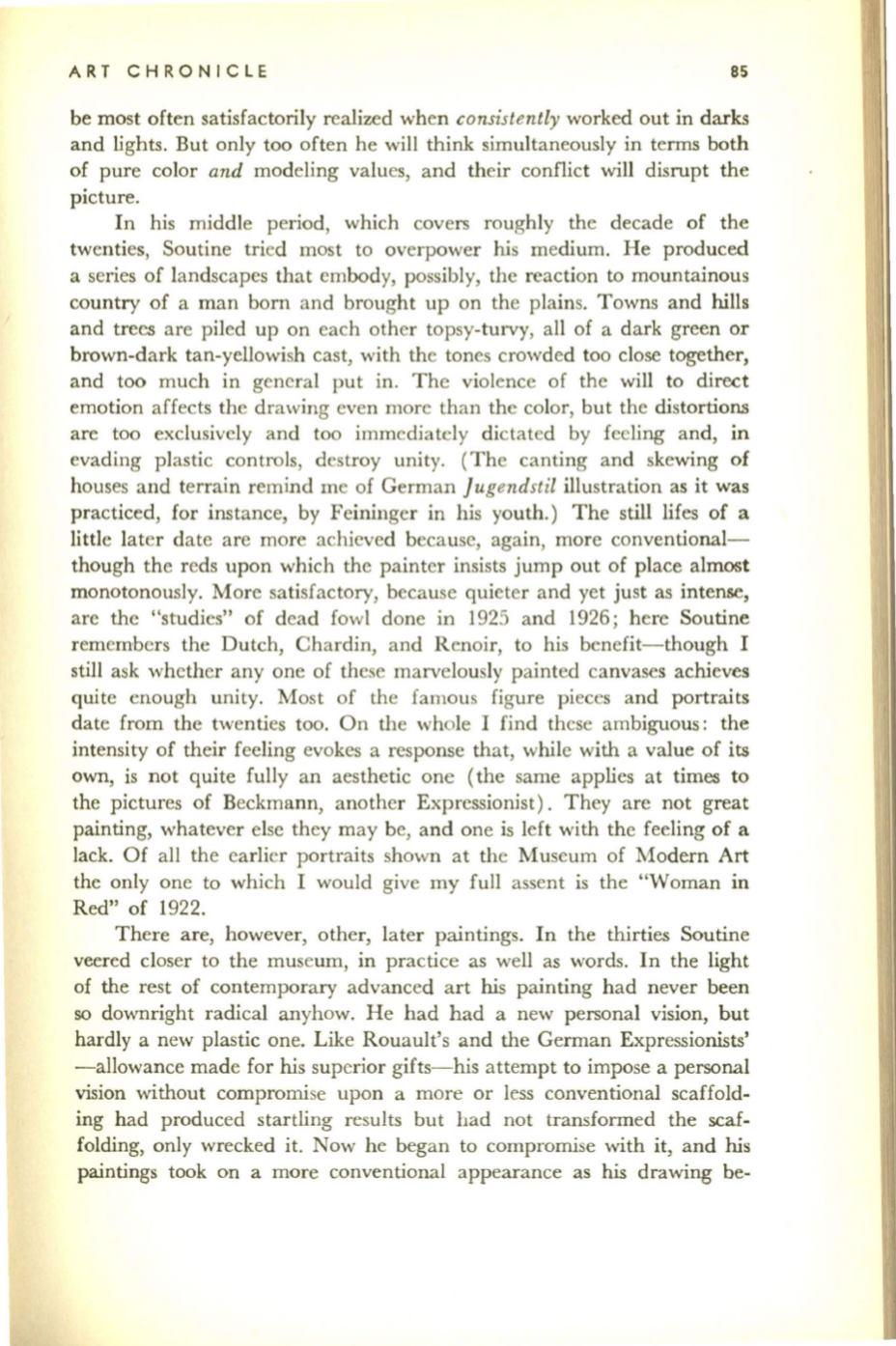
ART CHRONICLE
8S
be most often satisfactorily realized when
consistently
worked out in darks
and lights. But only too often he will think simultaneously in terms both
of pure color
and
modeling values, and their conflict will disrupt the
picture.
In his middle period, which covers roughly the decade of the
twenties, Soutine tried most to overpower his medium. He produced
a series of landscapes that embody, possibly, the reaction
to
mountainous
country of a man born and brought up on the plains. Towns and hills
and trees are piled up on each other topsy-turvy, all of a dark green or
brown-dark tan-yellowish cast, with the tones crowded too close together,
and too much in general put in. The violence of the will to direct
emotion affects the drawing even more than the color, but the distortions
are too exclusively and too immediately dictated by feeling and, in
evading plastic controls, destroy unity. (The canting and skewing of
houses and terrain remind me of German
Jugendstil
illustration as it was
practiced, for instance, by Feininger in his youth.) The still lifes of a
little later date are more achieved because, again, more conventional–
though the reds upon which the painter insists jump out of place almost
monotonously. More satisfactory, because quieter and yet just as intense,
are the "studies" of dead fowl done in 1925 and 1926; here Soutine
remembers the Dutch, Chardin, and Renoir, to his benefit-though I
still ask whether anyone of these marvelously painted canvases achieves
quite enough unity. Most of the famous figure pieces and portraits
date from the twenties too. On the whole I find these ambiguous: the
intensity of their feeling evokes a response that, while with a value of its
own, is not quite fully an aesthetic one (the same applies at times to
the pictures of Beckmann, another Expressionist). They are not great
painting, whatever else they may be, and one is left with the feeling of a
lack. Of all the earlier portraits shown at the Museum of Modern Art
the only one to which I would give my full assent is the "Woman in
Red" of 1922.
There are, however, other, later paintings. In the thirties Soutine
veered closer to the museum, in practice as well as words. In the light
of the rest of contemporary advanced art his painting had never been
so downright radical anyhow. He had had a new personal vision, but
hardly a new plastic one. L ike Rouault's and the German Expressionists'
-allowance made for his superior gifts-his attempt to impose a personal
vision without compromise upon a more or less conventional scaffold–
ing had produced startling results but had not transformed the scaf–
folding, only wrecked it. Now he began to compromise with it, and his
paintings took on a more conventional appearance as his drawing be-


